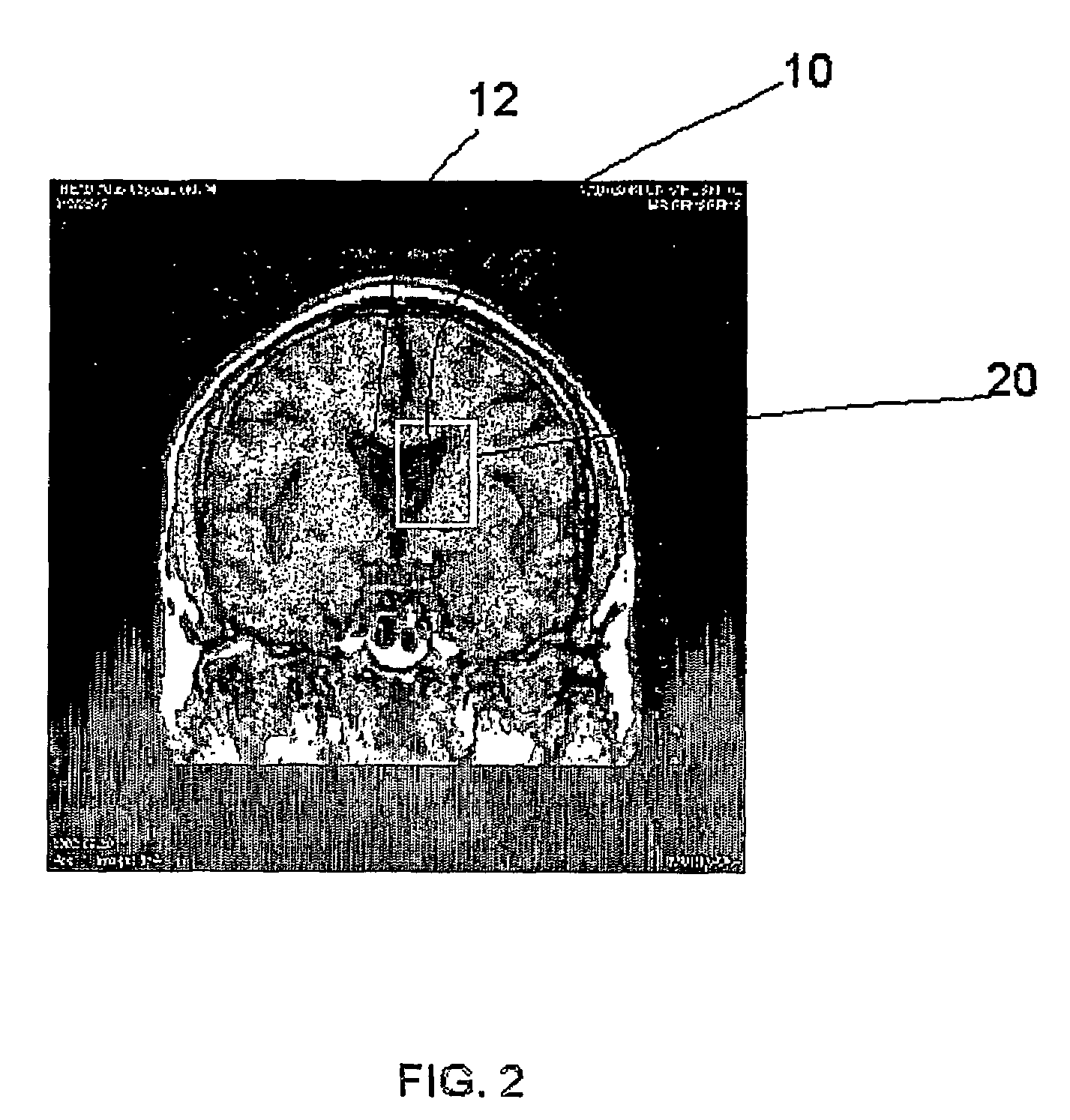Method and apparatus for extracting cerebral ventricular system from images
a cerebral ventricular system and image technology, applied in image enhancement, image analysis, instruments, etc., can solve the problems of inability to avoid inclusion of non-ventricular csp regions, inability to work, and dependence of this algorithm on coarse binary brain segmentation image and coarse white matter segmentation image, etc., to achieve more robust and flexible effects
- Summary
- Abstract
- Description
- Claims
- Application Information
AI Technical Summary
Problems solved by technology
Method used
Image
Examples
Embodiment Construction
1. Abbreviations Used in the Disclosure
[0051]The following abbreviations are used in the present specification:[0052]AC—anterior commissure[0053]PC—posterior commissure[0054]MSP—midsagittal plane[0055]VL—lateral ventricle[0056]V3—third ventricle[0057]V4—fourth ventricle[0058]VLL—left lateral ventricle[0059]VLR—right lateral ventricle[0060]VLL-B—body of the left lateral ventricle (including the anterior and posterior horns)[0061]VLR-B—body of the right lateral ventricle (including the anterior and posterior horns)[0062]VLL-I—inferior (temporal) horn of the left lateral ventricle[0063]VLR-I—inferior (temporal) horn of the right lateral ventricle[0064]AC-PC—intercommissural (axial) plane passing through the AC and PC[0065]VAC—coronal plane passing through the AC[0066]VPC—coronal plane passing through the PC[0067]CSF—cerebrospinal fluid[0068]GM—grey matter[0069]WM—white matter[0070]ROI—two-dimensional region of interest[0071]2D—two-dimensional (or two dimensions)[0072]3D—three-dimension...
PUM
 Login to View More
Login to View More Abstract
Description
Claims
Application Information
 Login to View More
Login to View More - R&D
- Intellectual Property
- Life Sciences
- Materials
- Tech Scout
- Unparalleled Data Quality
- Higher Quality Content
- 60% Fewer Hallucinations
Browse by: Latest US Patents, China's latest patents, Technical Efficacy Thesaurus, Application Domain, Technology Topic, Popular Technical Reports.
© 2025 PatSnap. All rights reserved.Legal|Privacy policy|Modern Slavery Act Transparency Statement|Sitemap|About US| Contact US: help@patsnap.com



